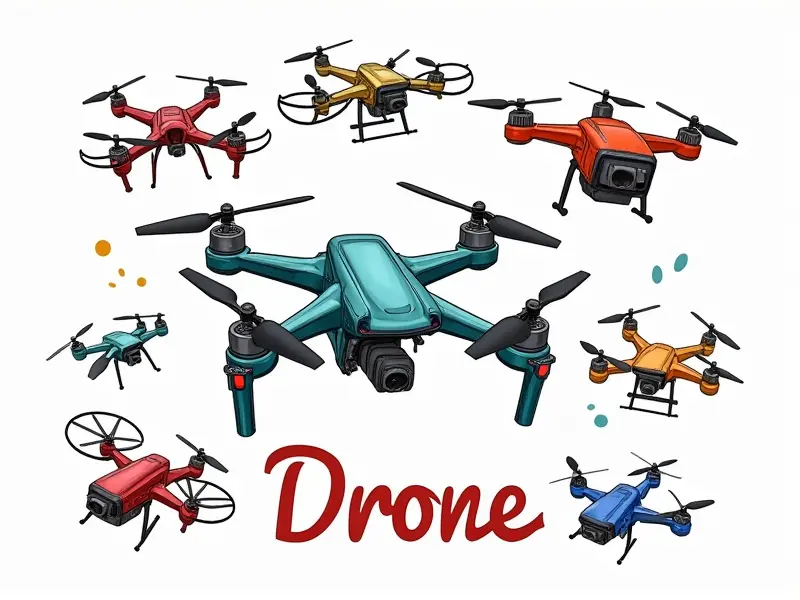Can I fly a RC plane indoors?

Best Indoor RC Planes for Small Spaces
Flying radio-controlled (RC) planes indoors can be an exhilarating hobby, but it requires the right equipment. Here are some of the best indoor RC planes that are perfect for small spaces:
- HobbyZone Sport Cub S: Ideal for beginners due to its easy handling and stability.
- E-flite UMX Wolverine: Known for its agility and maneuverability, making it a favorite among enthusiasts.
- Multiplex EasyStar: A lightweight foam plane that is both durable and simple to fly indoors.
Challenges of Flying RC Planes Inside
Flying RC planes indoors presents unique challenges compared to outdoor flying. Some common issues include:
- Limited Space: Indoors, you have less room for maneuvering and recovery.
- Obstacles: Furniture, walls, and other objects can pose significant risks.
- Airflow: Indoor air currents can affect flight stability.
Secrets to Flying RC Planes Indoors
To master indoor flying, consider the following tips:
- Start Small: Begin with a small plane and gradually move up as you gain experience.
- Practice Slowly: Fly at lower speeds to get used to handling your RC plane indoors.
- Use Obstacle-Free Areas: Choose large, open spaces like basements or gyms for practice.
Indoor RC Plane Flight Guide
Flying an RC plane indoors requires a different approach compared to outdoor flying. Here’s your step-by-step guide:
- Select the Right Plane: Choose a lightweight, maneuverable model suitable for indoor conditions.
- Prepare Your Space: Clear out any obstacles and ensure you have enough room to fly safely.
- Check Battery Levels: Ensure your RC plane’s battery is fully charged before takeoff.
- Practice Takeoffs and Landings: Focus on smooth transitions between these critical phases of flight.
RC Plane Flying Indoors: Tips & Tricks
To enhance your indoor flying experience, follow these additional tips:
- Use a Low-Profile Controller: Opt for controllers with fewer sticks and buttons to simplify handling.
- Lightweight Materials: Choose planes made from lightweight foam or plastic to minimize damage risks.
- Flight Simulation Software: Practice in virtual environments before flying indoors.
Is Indoor RC Plane Flying Safe?
Flying RC planes indoors can be safe if you take the necessary precautions. Key safety measures include:
- Wear Protective Gear: Use goggles and helmets to protect yourself from potential injuries.
- Inspect Your Plane Regularly: Ensure all components are secure and functioning properly before each flight.
- Avoid Crowded Areas: Choose less crowded spaces to reduce the risk of accidents.
Indoor RC Plane Flying Demystified
Flying RC planes indoors might seem daunting, but with practice and proper planning, it can be a rewarding experience. Here’s how to approach indoor flying:
- Understand the Environment: Familiarize yourself with your flying space.
- Choose Appropriate Equipment: Select RC planes designed for indoor use.
- Leverage Technology: Utilize flight simulation software to improve skills before actual flights.
Best Practices for Indoor RC Planes
To optimize your indoor flying experience, adhere to these best practices:
- Regular Maintenance: Keep your RC plane in top condition by performing routine checks and repairs.
- Learn from Others: Join online forums and local clubs to exchange tips and tricks with fellow enthusiasts.
- Document Your Progress: Take notes on each flight session to track improvements and identify areas for enhancement.
Small Spaces, Big Fun: Indoor RC Planes
Indoor RC planes offer a unique way to enjoy the hobby even when space is limited. Here’s how you can maximize your enjoyment:
- Innovative Designs: Explore new models that are specifically engineered for indoor use.
- Social Interaction: Organize small-scale competitions or gatherings to engage with other hobbyists.
- Educational Value: Use RC planes as a teaching tool to introduce others, especially children, to the world of aviation.
RC Plane Flying Indoors: Legalities Explained
Flying RC planes indoors generally falls under personal property rules. However, it’s important to be aware of:
- Building Regulations: Check if there are any local regulations regarding indoor flying.
- Noise Levels: Be mindful of noise restrictions that may apply in residential areas.
- Insurance Coverage: Ensure your insurance policy covers RC plane accidents, both indoors and outdoors.
Indoor RC Plane Flying Guide
To ensure a smooth indoor flying experience, follow this comprehensive guide:
- Select the Right Environment: Choose a large, open space with minimal obstacles.
- Prepare Your Equipment: Ensure your RC plane and controller are in optimal condition.
- Fly Slowly and Steadily: Start at low speeds to get comfortable with indoor conditions.
- Practice Regularly: Consistent practice will help you improve your skills over time.
Conclusion
Flying RC planes indoors can be a thrilling and rewarding hobby, offering unique challenges and opportunities. By choosing the right equipment, understanding the environment, and adhering to best practices, you can enjoy this exciting pastime safely and effectively in even small spaces.

